Celebrity Collocations with Monco
Muralee Navaratnam, France
Monco a monitor corpus, which grows by 8 million words a day, lends itself well as a language mine of contemporary web news. For the English language classroom such present day written text is a nice resource to lean on. I want to quickly show some of this potential by describing two uses of the collocation function.
For example let’s see what are the collocates of the famous make and do verbs.
For make below is a screenshot of the search settings for collocation (to get to Collocation function look under Tools menu from main Monco page). Note I am looking for nouns that come after the verb make. The double asterisk is a short cut to look for all forms of make (try it without the asterisks and see what you get).
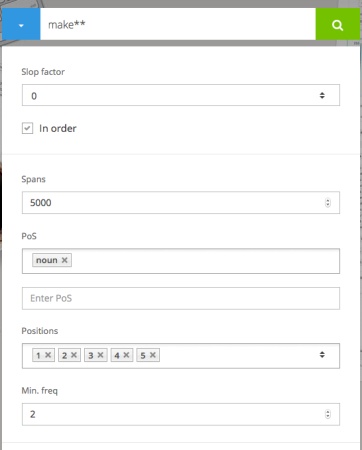
I get as results for the top 10 collocates (for all forms of make) the following:
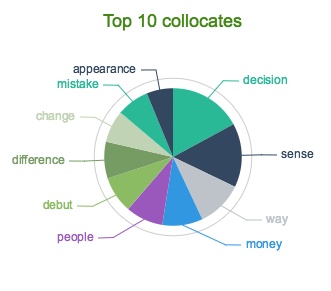
Click on image for full results
Interesting collocations include make sense, make way, make debut. The results can show you at a glance the types of constructions involved:
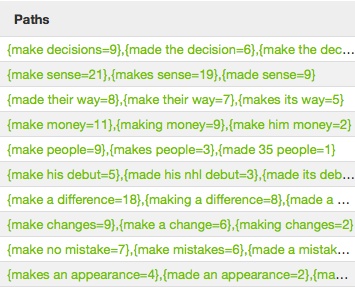
Or you can open another window for more details:

The top 10 collocates for do are:

Click on image for full results
Interesting collocates here are do thing, do anything, do something, do everything, which makes a change from do shopping, cooking, ironing etc. ; )
We can make more out of this up to the minute tool by searching for examples that include celebrities and famous people. Say we want to get examples of make collocations involving Justin Bieber? We can do this by using the following search term in collocation: Bieber make** and with the following settings:
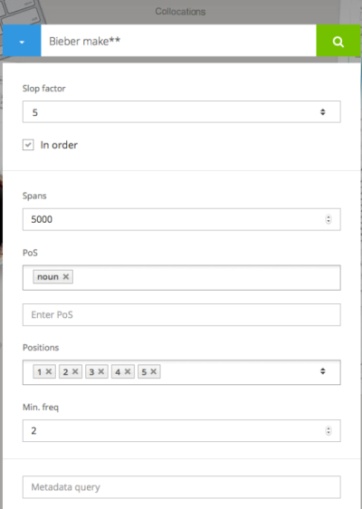
The Slop factor specifies how many words you want in-between your search terms so that you can search for dis-continuous strings. Unticking the In order checkbox can be used to further widen the net.
The Bieber collocates of make come up as follows:
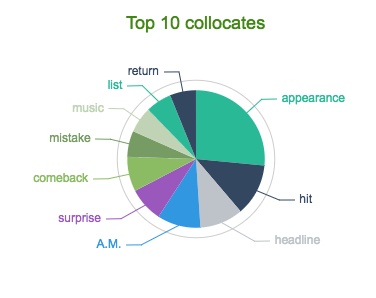
Click on image for full results
Some of the top collocates of make for Justin Bieber are:
appearance
hit
headline
A.M.
surprise
Note sometimes the tagging has errors; in this case surprise is part of the two-word compound surprise appearance.
We could also have searched for language in any order and possibly get more interesting sentences in which Bieber is not in subject position.
What if we looked at Barack Obama collocates of make? Using Obama make** search term with same settings we get:
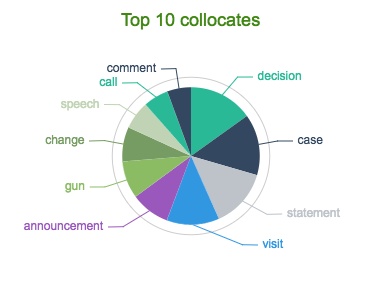
Click on image for full results
Here the top Obama collocates for make are:
decision
case
statement
visit
announcement
Here then is an altogether, and perhaps unsurprisingly, more serious set of collocations compared to Bieber. Bieber fans may well disagree.
Teachers can decide whether to let students explore Monco on their own, once some examples such as the ones mentioned here have been used. The opportunity for students to see if they can find example collocations of people they are interested in may provide a novel stimulus to get them to think about using such tools more.
As much corpus assisted language learning focuses on receptive skills it is important to not neglect productive skills. The fragment of language examples from Monco can be used to come up with discussion/debate questions. So, for example, let's take the fragment "Bieber made headlines". We could pose a question such as "Is coverage of celebrities such as Bieber in mainstream news a serious problem or the symptoms of a serious problem?"
We could use ambiguous or contradictory fragments to ask students to imagine a story based on such open-ended language. For example the fragment "Bieber wants to make music" is open for interpretation as a prompt in the task of writing short story or dialogue.
Do have a play with Monco and see what sorts of classroom ideas are possible.

Please check the Methodology for Teaching English Spoken Grammar course at Pilgrims website.
Please check the English Language Improvement for Teachers course at Pilgrims website.
Please check the English Language Improvement for Adults course at Pilgrims website.
Please check the Methodology & Language for Secondary Teachers course at Pilgrims website.
Please check the Teaching Advanced Students course at Pilgrims website.
Please check the Practical Uses of Technology in the Classroom course at Pilgrims website.


|